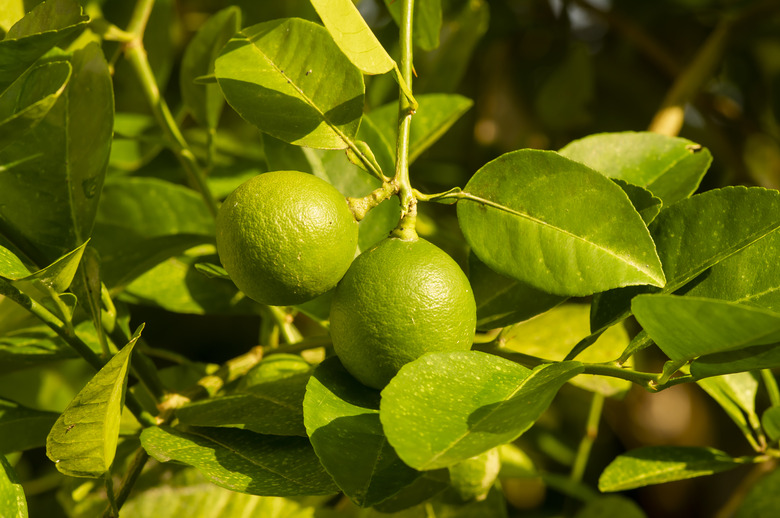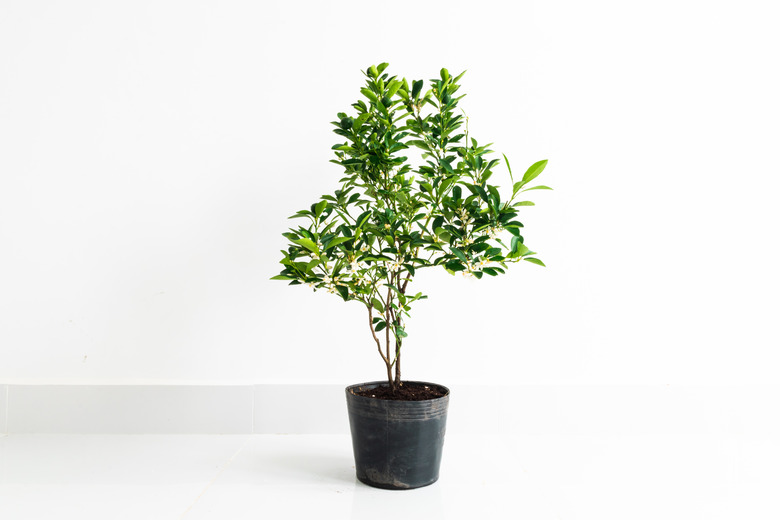How To Plant Key Lime Trees
Timing and location are important considerations when planting Key lime trees (Citrus x aurantiifolia). These cold-sensitive citrus trees can grow outdoors only within U.S. Department of Agriculture plant hardiness zones 9b to 11a, while gardeners in cooler climates must grow them in pots and overwinter them indoors.
How long does it take for a Key lime tree to bear fruit?
**It can take several years after planting for full-grown Key lime trees to bear fruit.** However, by choosing the right location and planting the tree at the right time, you can give it a good start in the garden.
When to Plant a Key Lime Tree
Planting Key lime trees at the right time allows them to establish a healthy root system and acclimate to their new home, which will help them bear fruit sooner.
Within their hardiness zone range, early spring is the best time to plant citrus trees such as the Key lime, although it's best to wait until after the last frost at the cooler end of their range.
In warm and frost-free climates such as Southern California and Florida, Key lime trees can be planted virtually year round. Potted Key limes can be repotted year round, as well.
Tip
Plant Key lime trees in the morning or early evening when conditions are cool and moist.
Where to Plant Key Lime Trees
Selecting the right planting site is perhaps the most important part of successfully planting and growing a Key lime tree.
- **Sunlight:** A sunny, wind-sheltered spot is best for growing Key limes, so look for a location near a south-facing wall, where they will receive protection from the wind and plenty of sun. At least 6 to 8 hours of direct sun each day are required for strong growth and good fruiting in Key lime trees, so avoid planting these sun-loving trees in shaded locations.
- **Soil pH:** Key limes grow best in loamy soil with a pH between 5 and 8, so it's a good idea to test your soil pH before planting. They are sensitive to salinity in soil, so they are not an ideal garden tree in seaside locations.
- **Drainage:** Good drainage is very important when growing Key lime trees because they are susceptible to root problems. Avoid planting in areas where water pools and drains slowly after rain.
Warning
Do not mix fertilizer or compost into the backfill soil when planting Key lime trees.
How to Plant a Key Lime Tree
First, put on thick leather gloves before working with Key lime trees, because they are spiny and can cause injury if handled without protection.
- Dig a hole that is the same depth as the tree's pot and 1 1/2 times as wide.
- Remove the tree from its pot and tease apart the roots.
- Set the roots in the hole and check how deep the tree is standing. The graft union, which is a thick portion of growth near the base of the trunk, should be 4 to 6 inches above the surrounding soil.
- Have a helper hold the tree upright while you fill in around the roots. Add soil until the hole is halfway filled and then run water into the hole to settle the soil. Fill in the remaining half of the hole.
- Spread a 2-inch-thick layer of mulch in a 3-foot diameter circle around the tree. Do not pile mulch against the trunk.
How to Plant Key Limes in Pots
Key lime trees must be grown in pots in cooler areas. The container can be made of any material, whether it's ceramic, wood or plastic as long as it has drainage holes at the base.
A 15-inch container is a good starter pot for most Key lime saplings, but larger containers such as half wine barrels also can be used. Position the pot in a sunny location that receives light midday shade and protection from strong wind.
Fill in the bottom one-third of the pot with soil. Remove the Key lime from its pot and untangle the roots. Settle the sapling into its new pot; hold the trunk upright and fill in the pot until the roots are covered. The graft should be 4 to 6 inches above the soil.
Watering is an especially important part of Key lime plant care when growing these sensitive trees in pots, so saturate the soil to settle the soil and hydrate the roots after planting.
Tip
Use acidic potting soil specially formulated for citrus trees when potting Key lime trees.

